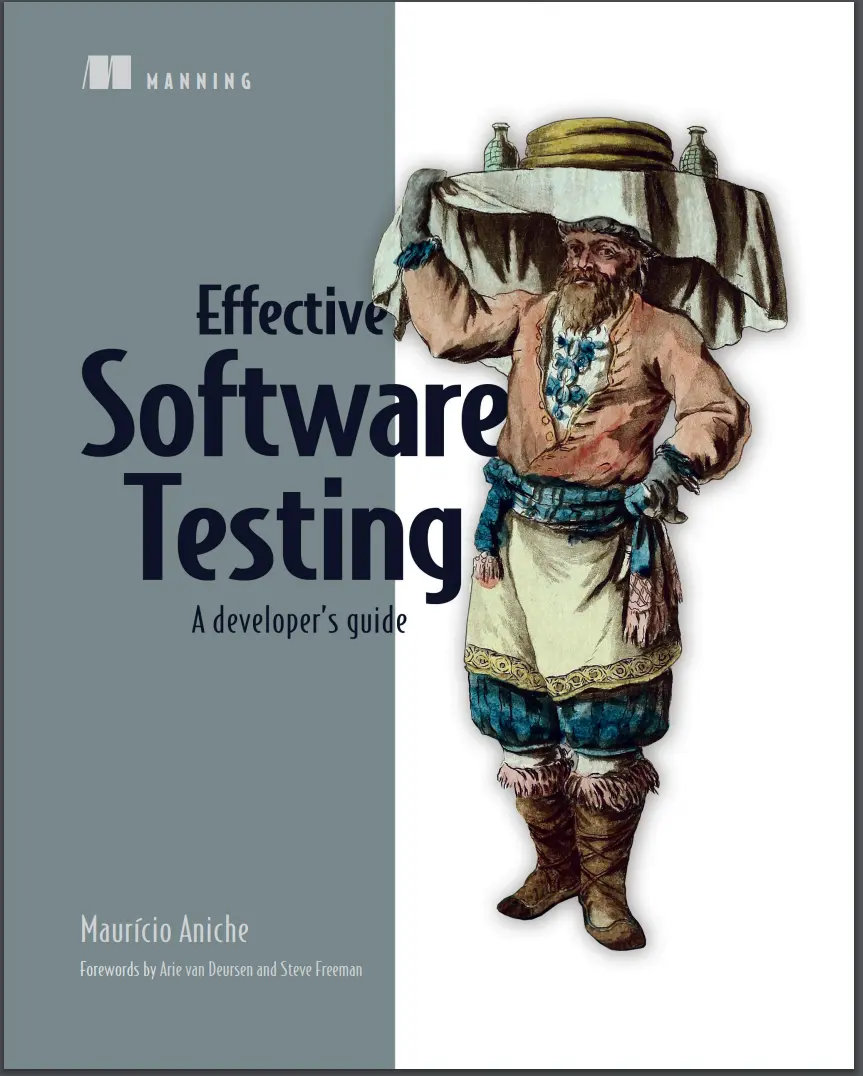Effective Software Testing

- Author: Mauricio Aniche
- Release date: 2022
- Publisher: Manning Publications Co.
- Number of pages: 329
- File Size: 7,2 МБ
Go beyond basic testing! Great software testing makes the entire development process more efficient. This book reveals a systemic and effective approach that will help you customize your testing coverage and catch bugs in tricky corner cases.
In Effective Software Testing you will learn how to:
- Engineer tests with a much higher chance of finding bugs
- Read code coverage metrics and use them to improve your test suite
- Understand when to use unit tests, integration tests, and system tests
- Use mocks and stubs to simplify your unit testing
- Think of pre-conditions, post-conditions, invariants, and contracts
- Implement property-based tests
- Utilize coding practices like dependency injection and hexagonal architecture that make your software easier to test
- Write good and maintainable test code
Effective Software Testing teaches you a systematic approach to software testing that will ensure the quality of your code. It’s full of techniques drawn from proven research in software engineering, and each chapter puts a new technique into practice. Follow the real-world use cases and detailed code samples, and you’ll soon be engineering tests that find bugs in edge cases and parts of code you’d never think of testing! Along the way, you’ll develop an intuition for testing that can save years of learning by trial and error.
Purchase of the print book includes a free eBook in PDF, Kindle, and ePub formats from Manning Publications.
About the technology
Effective testing ensures that you’ll deliver quality software. For software engineers, testing is a key part of the development process. Mastering specification-based testing, boundary testing, structural testing, and other core strategies is essential to writing good tests and catching bugs before they hit production.
About the book
Effective Software Testing is a hands-on guide to creating bug-free software. Written for developers, it guides you through all the different types of testing, from single units up to entire components. You’ll also learn how to engineer code that facilitates testing and how to write easy-to-maintain test code. Offering a thorough, systematic approach, this book includes annotated source code samples, realistic scenarios, and reasoned explanations.
What's inside
- Design rigorous test suites that actually find bugs
- When to use unit tests, integration tests, and system tests
- Pre-and post-conditions, invariants, contracts, and property-based tests
- Design systems that are test-friendly
- Test code best practices and test smells
About the reader
The Java-based examples illustrate concepts you can use for any object-oriented language.
If you liked this book, share it with your friends, thus you help us develop and add more interesting and necessary books for you!